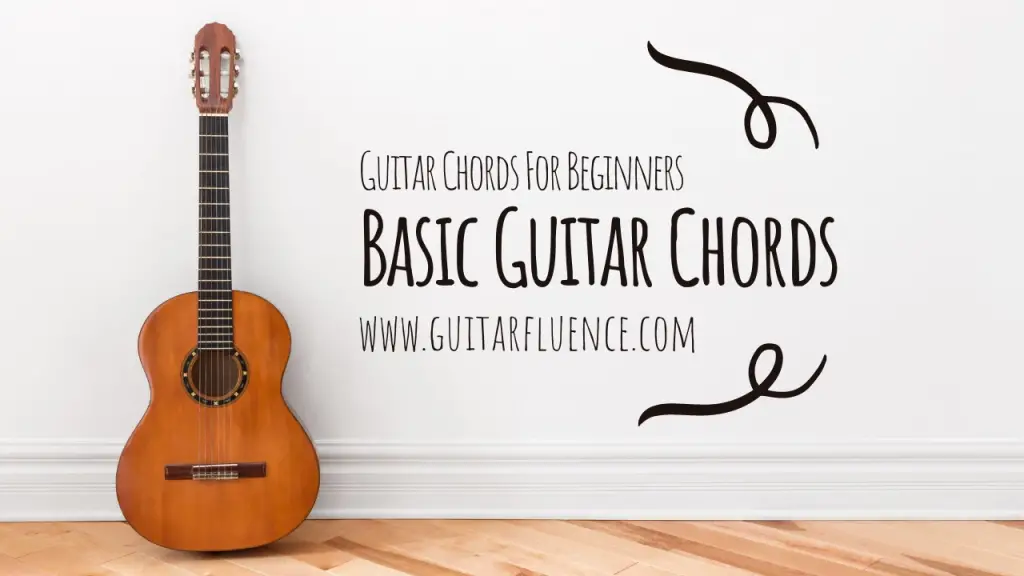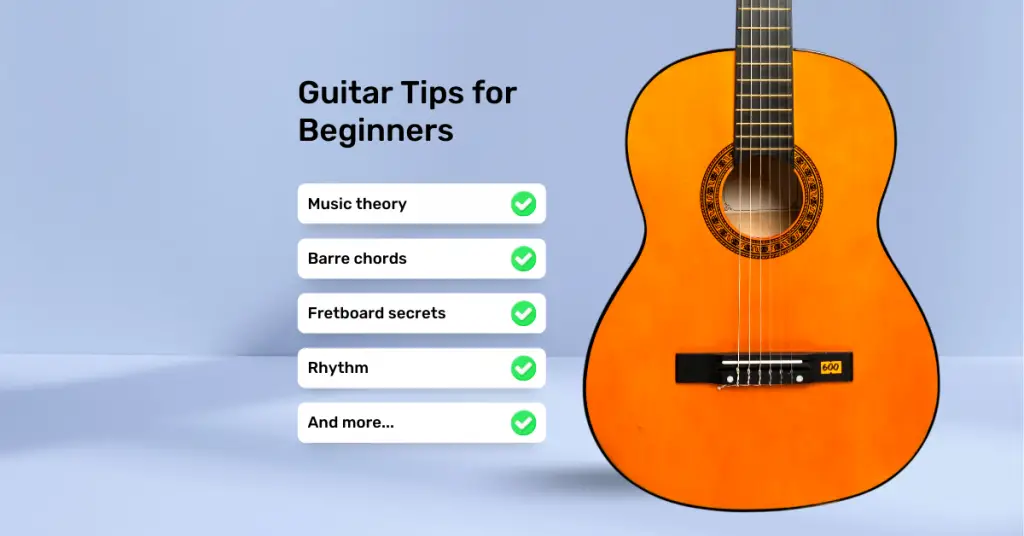Learning barre chords (also know as bar chords) can be an extremely frustrating process for guitar players.
Luckily these technical barriers can be overcome with a little bit of knowledge!
I’m going to show you that knowledge in this post. This knowledge comes from years of teaching guitar barre chords for beginners.
Table of Contents
What are guitar barre chords?
A barre chord is any chord where a finger is playing the same fret on more than one string.
A great and popular example of this is the F chord.
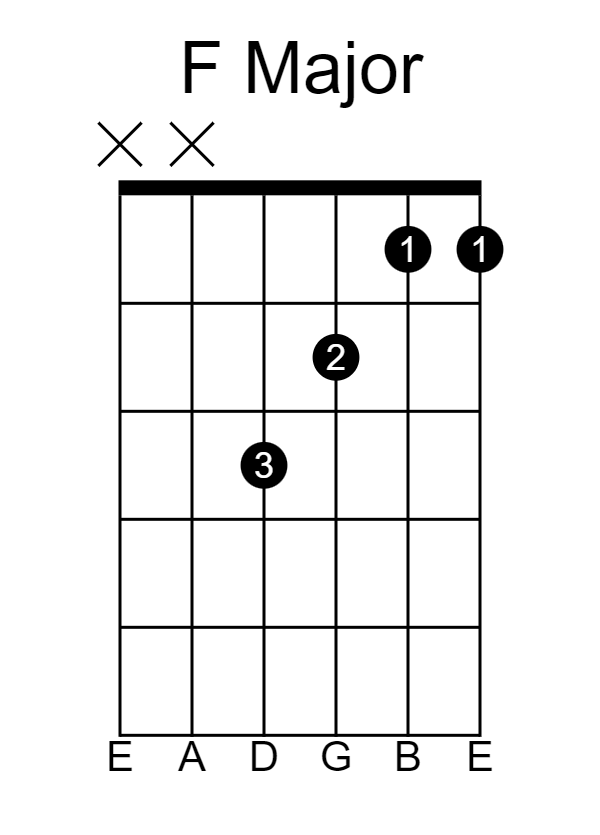
As you can see, the 1st finger is barring the first fret.
Why should I learn barre chords?
There are instances on guitar where you’ll absolutely need to use barre chords, so you’ll need to learn them if you want to advance.
Barre chords will most commonly be used to play minor and major triads across the entire fretboard. These types of chords are the bread and butter for most guitar players.
These are the barre shapes you get from transposing your open E major and open E minor chords. We’ve moved the root note to G.
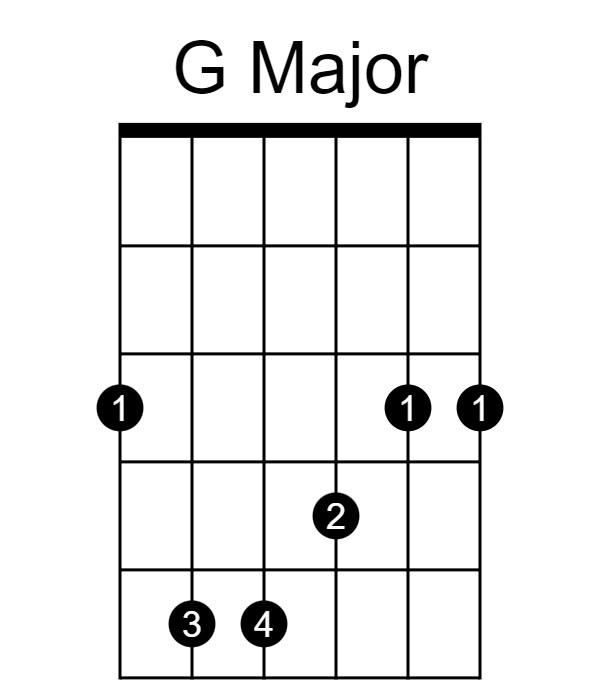
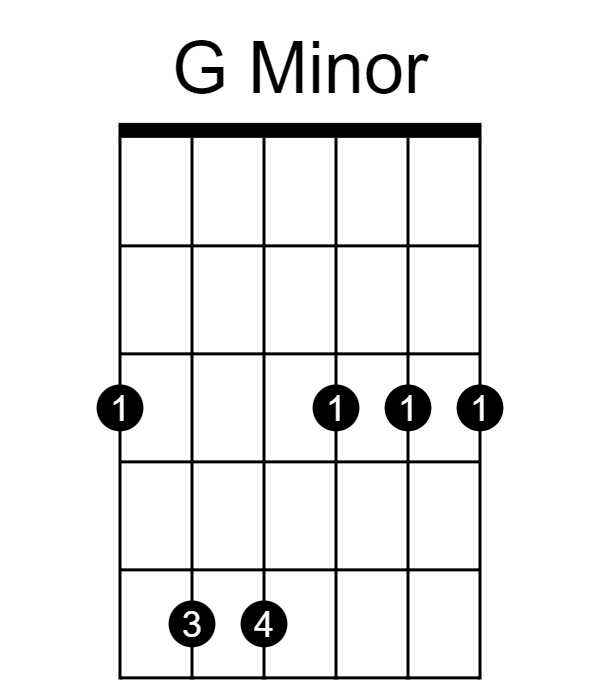
These are the barre shapes you get from transposing your open A major and open A minor chords. We’ve moved the root note to B.
You’ll use your pinky or ring finger to play the barre for B major.

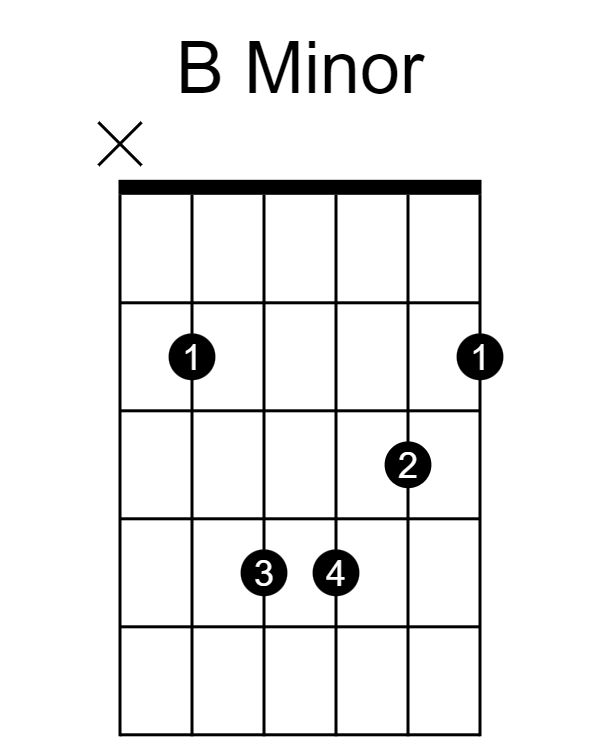
Barre chords are less frequently found in advanced chords, such as 7th chords, but you’ll still encounter some instances where they’re used, such as a dominant 7th barre.

How to play barre chords
Barre chords are most commonly played with the index finger.
You’ll want to start with barring away from the nut, because the string tension is strong there.
Do this by barring the third fret on all adjacent sets of 2 strings, starting with the High E and B strings.
As you move your barre to lower strings you’ll realize that you’re not using the rest of your index finger to barre the fret. This is the case with almost every barre shape!
Most barres don’t use the entirety of your barring finger. They just use a portion of the finger.
Even when you are barring a larger chord you’ll only need to focus playing the barre on the frets that it’s actually playing.
Barres are rarely used to fret all 6 strings on a single fret.
You’ll practice barre chords after you look at some tips and tricks.
Tips and tricks for playing barre chords
Use smaller barres
I already mentioned the use of smaller barres above.
These are especially useful when you’re just getting started with barre chords.
Use the side of your finger
Leveraging the side of your finger can be your best friend with barring.
This means you’ll be pulling your finger towards your body (using your elbow as a lever), which put an emphasis on the boney side of your finger, rather than an emphasis on the front of your finger.
Wrist and thumb positions
Every guitar player has different autonomy. This means that left hand technique will vary from one guitarist to the next.
With that being said, consistently take note of what you’re doing with your wrist and thumb.
Make sure that your wrist is not curved too much, as this can be inefficient for playing and cause problems for your wrist.
As for your thumb, move it up and down in one position of the neck to see where it feels most comfortable.
After you’ve discovered where the thumb feels best for you you’ll want to experiment with pressing it against the neck. Try to find a balance between pressing it hard and soft.
Here’s an in-depth article about thumb position.
Quit barring entire frets!
As a general rule you don’t need to barre an entire fret. You’re barring finger only needs to focus on the notes that are actually meant to ring out.
Are barre chords easier on electric guitar?
As a general rule barre chords are easier to play on electric guitar. This is the result of light string gauges and low string tension.
Practicing barre chords
F Major Barre Chord
Let’s start by working with the F Chord, one of the most important guitar chords for beginners.
Start by playing the bar all by itself (without the use of fingers 2 and 3). Practice the bar until it feels comfortable.
Remember to use the side of your finger (the bony part)!
You can add in fingers 2 and 3 after you’ve played the bar by itself for a few minutes.

G Major Barre Chord
The G major barre chord is going to be a little tricky.
Good news, though: unlike the F major barre chord, G major is not right next to the nut!
Start by placing your index finger across the entire third fret. Remember to only apply pressure where it matters most, which is on the high E, B, and low E.
From there you’ll place fingers 3,4, and 2 as shown in the chord chart.

B Major Barre Chord
The B Major is going to be different because you won’t be barring with your index finger.
You’ll be using your pinky (4) or ring (3) finger instead.
Practice the bar all by itself, and then incorporate your index finger (1).

Guitar Barre Chords Summary: Patience is key
Barre chords can be tough, but you can push through them!
In fact you better push through them, because they’re used in 1000’s of songs.
Playing barre chords will come easily with two things: patience and good quality practice.
So what are you waiting for? Start practicing your barre chords! You’ll see good results before you know it.


